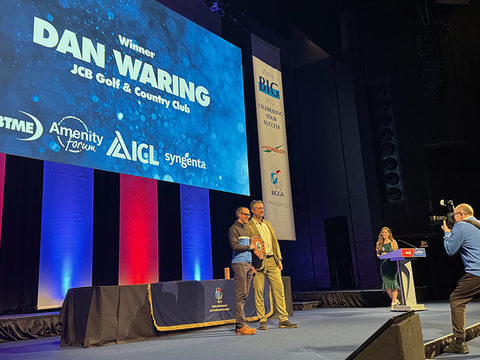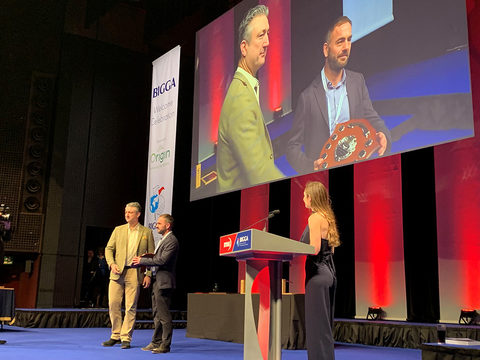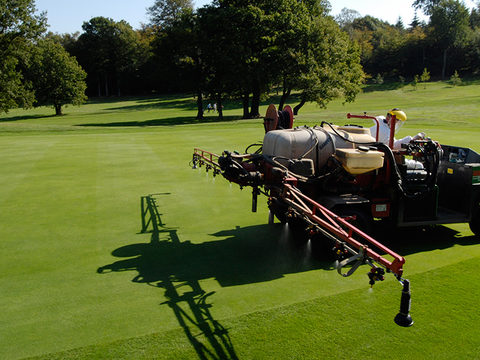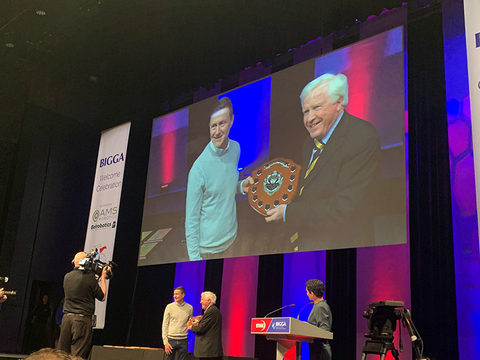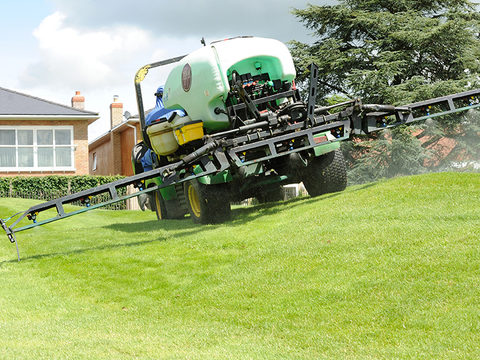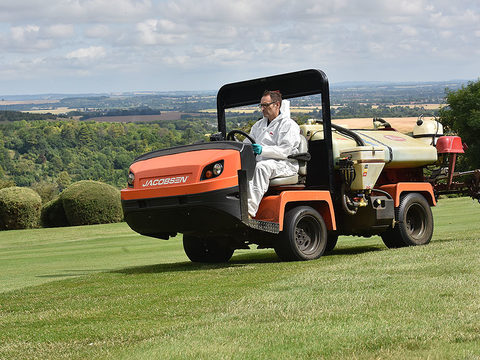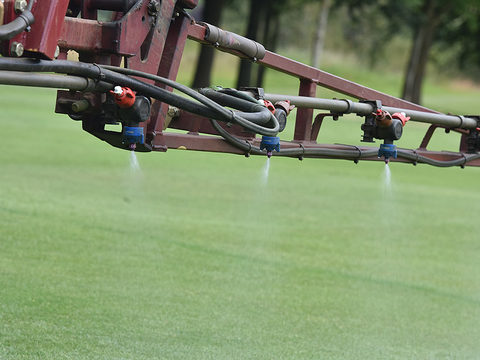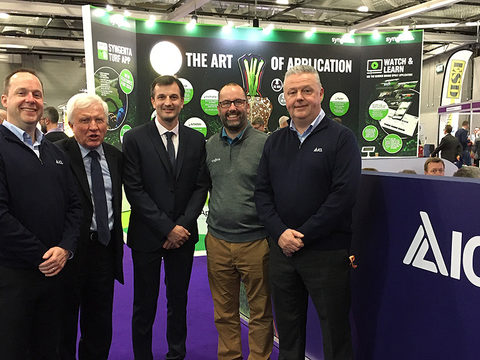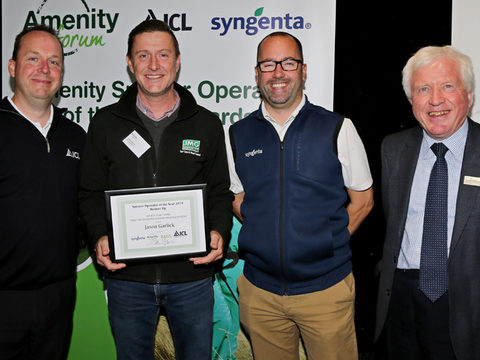ASOY 2019 Finalist Q&A - Ian Millward
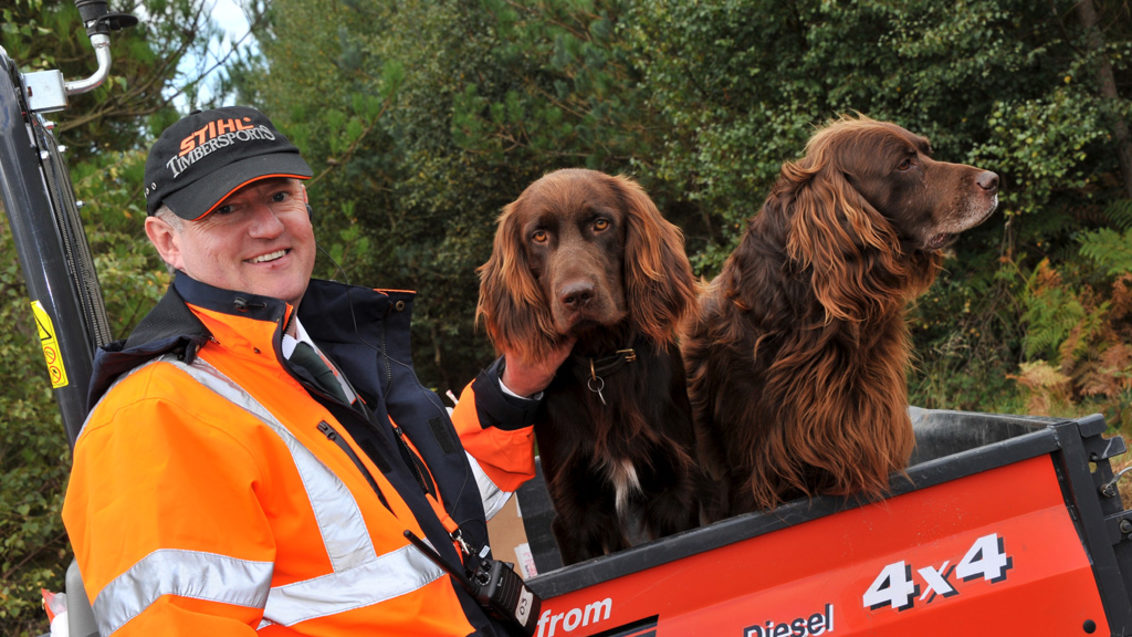
Q1 How long have you been working in the Turf Grass Industry, brief details about your career to date?
The company name is Millward Forestry Ltd and we began trading in 1991 so we are 28 years old! The name is a bit of a misnomer nowadays as we do very little ‘traditional’ forestry work and have diversified significantly. My background is forestry and I did a three year forestry course at Newton Rigg College in Cumbria from 1982-85. Following that I worked for two large forestry companies before setting up on my own in 1991. Back then our major work was tree planting for the likes of Hanson Aggregates, RMC, The Woodland Trust and The Crown Estates amongst many others. This was where my pesticide experience started as we had to spot weed all the trees we had planted the previous winter as well as band spray planting sites for the following season to kill all grass before we planted and marked out planting lines. In those early days I did most of the spraying myself as I could not afford to pay contractors but as we got busier I recruited a core team of contractors to help out. Even then I was investigating nozzle selection to allow me to spray as many trees as I could from one knapsack fill to reduce filling time, as many of the sites were remote with no water.
After a few years I expanded the business by taking on a lease for some land and planting about 18 acres of Christmas trees. This pushed me into getting my first mechanical sprayer as I now needed to overall spray larger areas regularly with herbicides, insecticides and fungicides. Like any small business cashflow is always tight so I needed to buy a machine that could be used for a number of purposes rather than a specialist sprayer. After much research I bought a Yamaha 440cc quad bike with CDAX spray tanks on both the front and back carriers with a foam marker on the front and a CDAX spraymeter which measured speed and area covered. This came with easily demountable 3m and 6m booms. The spray tanks were all linked together with quick release fittings and they could be removed within minutes to allow the use of the quad for other duties. This was an excellent combination and the CDAX kit was first rate. I only retired it from service a couple of years ago and it is still in my yard.
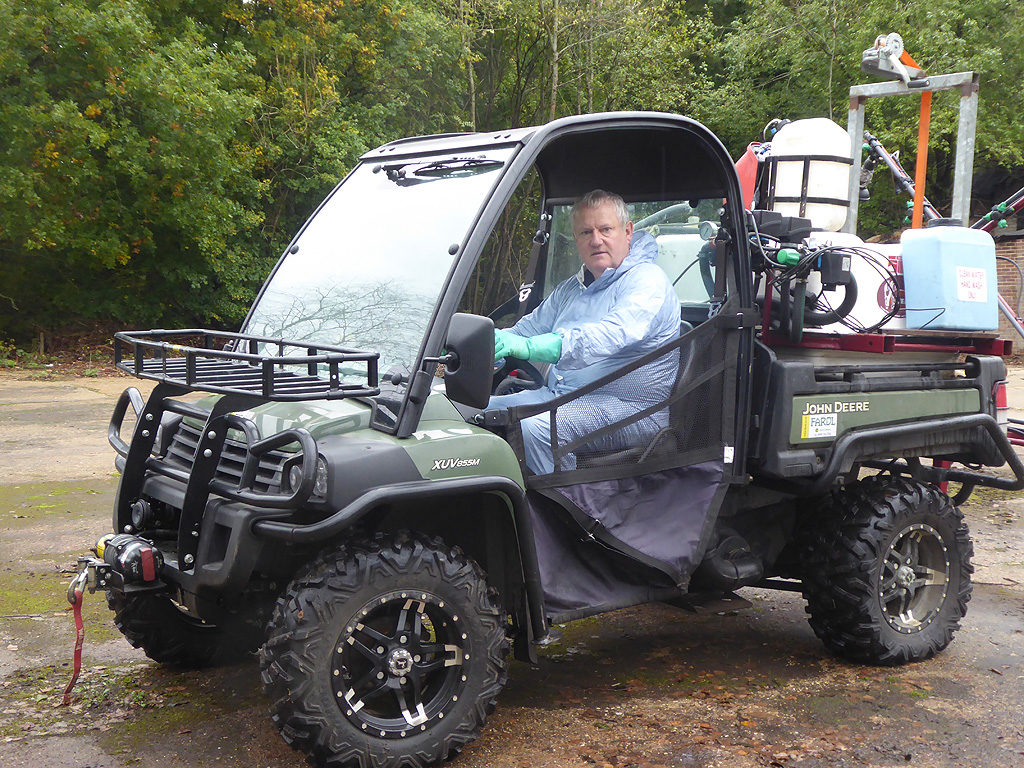
Q2 where are you working now and what is your job title and responsibilities
It became apparent that our traditional planting work was reducing year on year so we needed to diversify. My quad sprayer was only needed for a few days a year to spray the Christmas trees so I began to think of alternative uses for it. One or two clients asked me to spray their horse paddocks to remove the usual mix of paddock weeds such as Ragwort and Buttercup. Once upon a time they would have asked the local farmer to do this, but as agricultural spray equipment got larger or contracted out they were no longer interested in spraying a 3 acre horse paddock with limited access using a 24m agricultural sprayer! I visited the local library and went through all the local Yellow pages. (Remember them? This was before the wonders of the internet!) and looked up all the addresses of riding stables, livery yards etc. in six counties. From this we created a database of equine businesses which we marketed to, as well as adverts in local horse magazines. We obviously struck a rich seam of business that no-one then had seemed to tap into and today we spray over 400 acres of horse paddocks a year from less than 1 acre to 20 acres plus.
We are still a small company. I run it day to day and do all the paddock spraying, my partner Susie handles all the administration and accounts and I use teams of tried, tested and reliable contractors as and when I need them. I personally trained my son last year to get his PA1 and PA6 tickets so he could help out when needed. We have looked to expand our contracting side, I did employ a contracts manager for a while, but kept running up against the age-old problem of getting the right contractors who would work to the standards both my clients and I wanted. In the end I decided to keep it small and simple
Q3 what qualifications do you have?
Apart from my Forestry qualification I first did my PA1 and PA6 way back in 1988 and still have the original certificate. I think that was the first year it became a requirement in the UK. I took my PA2 a few years afterwards when I started using the quad for spraying. I also have my quad ticket as well as all the ground-based chainsaw certificates. In about 2004, as part of my business diversification plan, I applied to become a Lantra pesticides instructor and NPTC assessor. That was a good move as running pesticide training courses and pesticide assessing has now become a large part of what I do and can be fitted in with other spraying work.
Q4 What spraying equipment do you use and what and how often are you spraying?
After 20 years the quad based system was in need of replacement. I was on my second quad but amazingly the same CDAX spray equipment. You don’t wear out quads by trundling around a flat paddock at 8kph! As you get older sitting astride a quad all day spraying becomes hard work and it is like wrestling a bear! Stability on some sites, limited spray capacity with two small tanks and the increasing demand for spraying was also an issue. I still required my sprayer to be multi-functional and easily transportable on my trailer so after careful research I opted for a John Deere Gator 855M and a purpose-built, demountable Team Sprayer 400L capacity sprayer with a 6m boom and hose reel. This sits beautifully in the load bed of the Gator and can be mounted or demounted easily in about 10 minutes. Driving the Gator is a dream compared to the quad. It has switchable 4WD, power steering, is stable, quiet, comfortable, economical and easy to get in and out of to open gates. I don’t know why I waited for so long to change. The extra tank capacity means I am filling up far fewer times a day than previously so can almost double my spraying capacity per day. I have fitted Hypro Profile EF3 3-way nozzle bodies so I can switch easily from grassland nozzles to liquid fertiliser ones. My record is nearly 50 acres in a day, not bad with a 6m boom!
For spot spraying we use Berthoud Vermorel 2000 sprayers which are well designed and as comfortable as a knapsack can ever be. We use Nomix CDA lances for some jobs and Micron stem injection equipment to deal with Japanese knotweed.
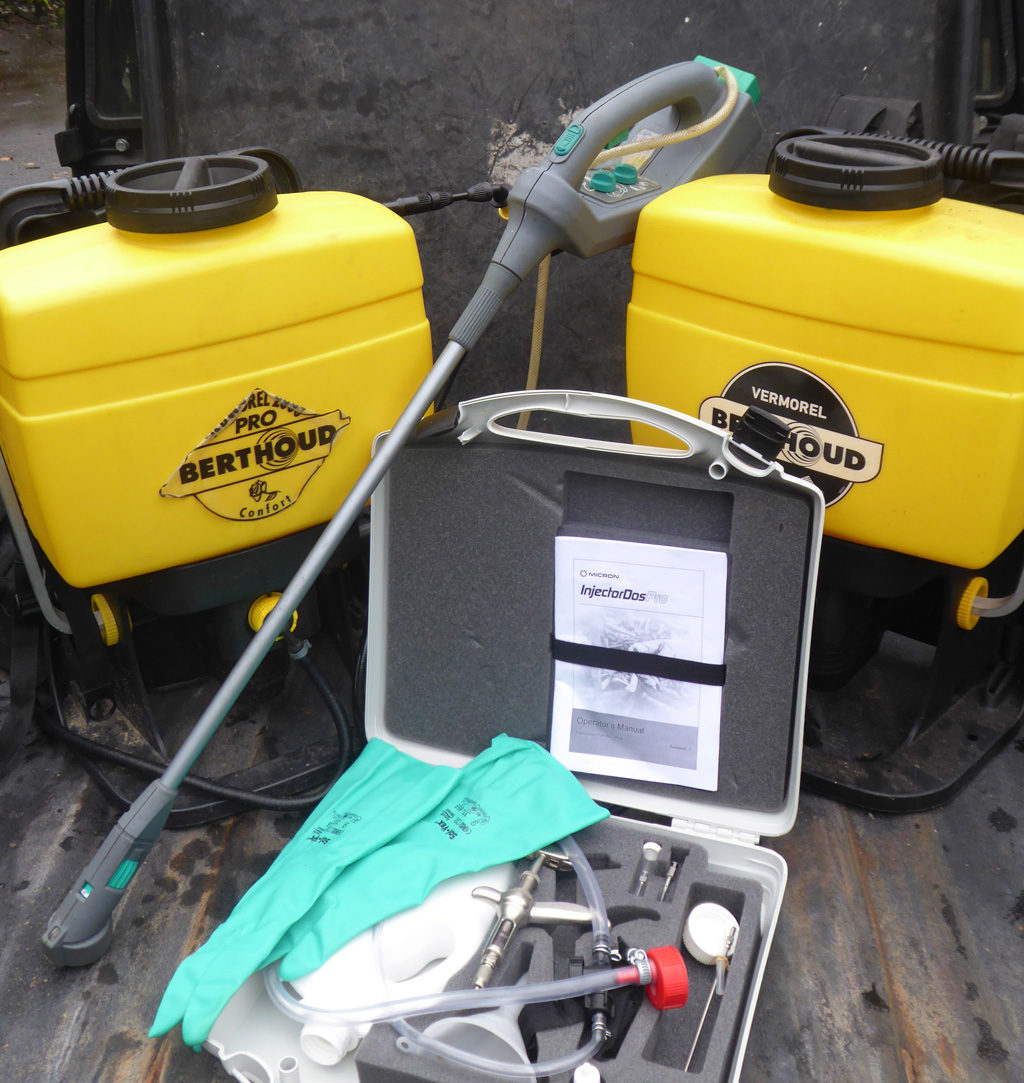
Q5 . What are your top five challenges with application?
1. Accuracy of application is paramount. We need to get the rate of application right so that all weeds are controlled effectively. We guarantee all of our work so if the spraying is not effective we promise to return and re-spray free of charge. It is obviously crucial we do not harm the grass as this would defeat the purpose of the exercise and we need to be mindful of the client’s needs to be able to put animals back on the paddocks as soon as possible after spraying. In most cases our clients do not know exactly how big their paddocks are.
2. The right pesticides at the right rate for the job. Most of our work is treating horse paddocks with a wide range of paddock weeds. For this we need to use a wide spectrum pesticide mix that will control pretty much everything we encounter from Ragwort to Buttercup, docks, nettles and thistles but leave the grass untouched. We used to use just one herbicide but found in some situations it did a great job on some weeds and not on others. Now we use a tank mix.
3. The need to avoid weed resistance. As we return, often every season, to some clients, as their paddocks are so heavily used and abused we need to ensure that the weeds are not becoming resistant to a single pesticide regime.
4. Environmental safety. We are often spraying paddocks with horses in adjacent fields or in semi urban areas with water courses, houses and gardens nearby. It is crucial our spray goes where it is intended and nowhere else. It is a point I endlessly make to trainees on my pesticide courses – you are 100% responsible for what comes out of your sprayer!
5. Timing. For weeds such as Ragwort there is a relatively short time window from them being actively growing to being too high, dying back and being pesticide resistant. In a bad season there may be very limited weather windows when it is not raining or too windy and we have to make the most of each suitable spraying day. Shower forecasts are the worst as you can find they just don’t happen or miss you by 10 miles!
Q6 What have you done to address the challenges?
It is always going to be a fact that there is less technology on small sprayers than a £250K agricultural one! I added a RDS 100 controller in the cab and a speed sensor on the Gators driveshaft. Although the Gator has a digital speedometer the RDS unit and sensor can be calibrated over an exact 100m to ensure accuracy. It is easy to see when spraying to maintain the correct speed and it gives me the precise area sprayed for each paddock. I am constantly checking my pressure gauge to ensure output is constant but the Flowjet pump on the sprayer is very good. I use 3D Defy nozzles for good weed coverage, especially on taller weeds like docks and nettles. I fitted a foam marker on to the sprayer to ensure even application. I looked into GPS systems but they are a little too sophisticated for the type of work we do. However, technology is always changing so I keep an eye open for developments.
At the start of each season I have a chat to my agronomist at Procam and pick his brains on any new products or ideas and rates of application to get the most effective and safest mix possible. If ever I have a client with a particular problem weed I will always seek his advice to get the right product. I began to notice that Ragwort was getting increasingly hard to fully control with one application, mostly due to having to use lower rates of pesticides. It was his advice that led to me using a tank mix rather than a single pesticide. This has led to a much more effective spray regime and happy clients! I also have an App on my phone to help identify a weed if I don’t recognise it.
Drift is the main risk to environmental safety. I obsessively monitor the likely wind speed on weather forecasts as much as the rain and am very conscious of local conditions. I carry a Kestrel wind meter with me. The boom is set as low as possible for the job and I use low drift nozzles and sometimes set the pressure down to 1.5 Bar to reduce drift and keep my speed down to 8kph. The spray controller on the Team Sprayer allows me to switch off any of the 3 boom sections, a luxury I did not have on the previous sprayer, so I can leave suitable buffer zones.
The ability to check weather by postcode now means I can get an accurate idea of weather in a precise location and I can change my intended spray route for the day to take advantage of this. I also use an adjuvant when spraying, not only to help make the application more effective but to help if I do get caught by an unexpected shower.
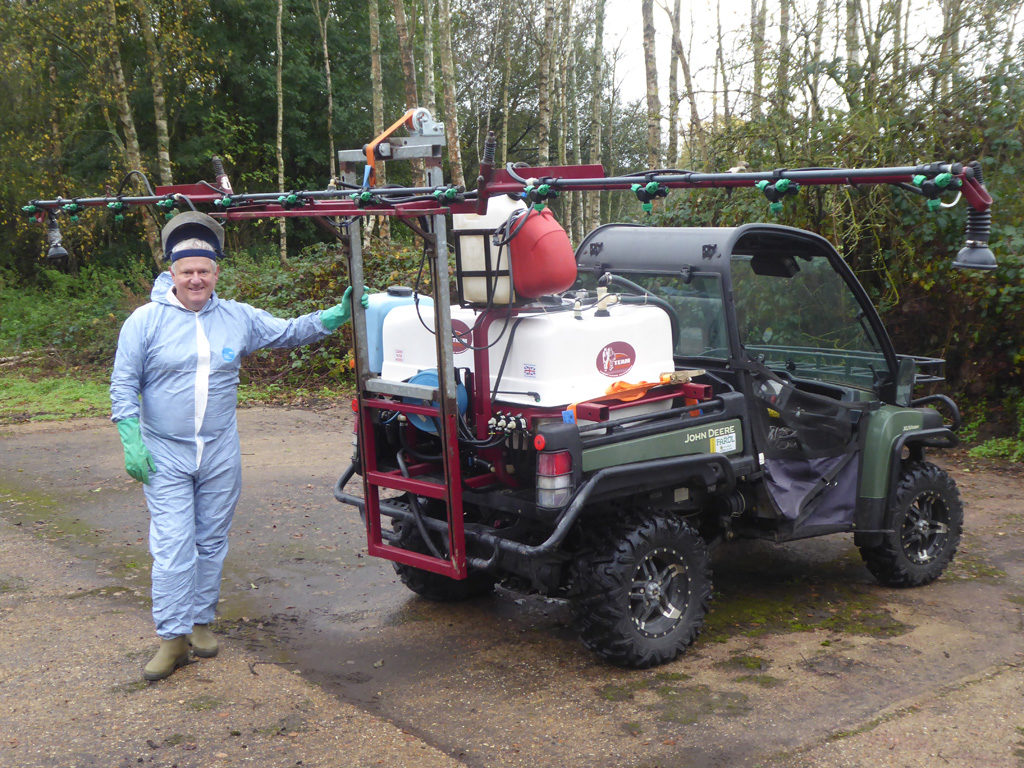
Q7 Top five tips of their sprayer modification or spraying practice to improve timeliness of application?
I have fitted all my control units in the cab on one panel so they are easy to see and reach when spraying so I am not distracted from watching where I am going.
I fitted a simple hand winch above my booms. The boom section weighs 40kg and is not hydraulically adjustable like more sophisticated units. It requires the loosening of 4 bolts to adjust the height and trying to do that whilst holding 40kg is next to impossible on your own. The addition of the winch does the hard graft for me and makes the process much easier. If something is easy to do you are much more likely to do it so it encourages setting an accurate boom height for each job.
To extend the spray season and fill a very niche market I had extra height adjustments fitted on the boom frame so we could spray bracken. This now enables me to raise the booms to around 7 feet high and the winch makes this easy to do.
When I bought the Gator I added an electric winch which can be mounted either at the front or rear of the machine. It has saved my bacon on a number of occasions when I have got bogged in unexpectedly wet ground or grounded out on an unseen stump.
I carry a full set of spare parts for the sprayer and tools in my vehicle including a pump, diaphragm’s, spare boom sections, hoses, seals, nozzle bodies etc. so if I have a problem I can fix it quickly on site and not lose time or money.

Q8 How do you minimise risk of environmental loss?
The main thing is to simply be aware and observant when spraying. As we deal with more than hundred clients or so during a season you do not get to learn the ground like you would at a golf club or sports ground. I am constantly watching for hazards, people approaching, blocked nozzles etc.
Working for livery yards means there are many different horse owners present. Some are rightly concerned about the spraying and the effect it might have on their horses. I will always take time to talk to them and explain exactly what is happening, advise on grazing intervals and give them a copy of product labels so they can read for themselves. When filling up at a client’s premises I always use my own hose to avoid risk of cross contamination. I give clients at least 48 hours notice of my arrival so they can move animals around.
Having a modern sprayer ensures accurate application and minimises the risk of leaks and drips. It also gives a professional image to clients when you use new equipment and know how to use it.
We are often asked to spray Giant Hogweed and Japanese Knotweed along riverbanks. I always complete the Environment Agency licence application myself to ensure we are fully compliant with the rules.
Q9 What record keeping do you use?
I use a very simple paper based system. After each job, and I might do seven or eight clients a day, I fill in the job sheet, which already has the client’s details on and add date, area sprayed etc. If I have sprayed lots of different paddocks for a client, I do a sketch map so I can remember which I did on each visit. Paper is reliable and doesn’t crash or delete itself! We keep these in a file for the required time span. They also form the basis for our subsequent invoicing and marketing to clients
I am a member of the Farm XS scheme and a couple of times a year I take my empty bottles and packaging to a local centre for disposal. They give me a waste note which I file with the records above.
Q10 How do you ensure you keep up to date with new developments? (Attending shows, Acquiring training / Basis Points CPD).
I am fortunate that in my role as a Lantra pesticide Instructor and NPTC pesticide assessor I am regularly delivering courses which means I am constantly updating myself. Both Lantra and NPTC run regular updating and re-certification events which are mandatory to retain your status. Last year I attended a three day update event for Lantra and another 1 day event with NPTC. Being asked to do a calibration exercise without using a calibration sheet and given some slightly odd facts as a starting point did stretch the mind! I read The Times every day and it is surprising how many pesticide related articles there are, usually about environmental threats. I visit the Amenity Forum and Voluntary Initiative websites regularly and attended the Amenity Forum conference last year and their excellent half day update event this year. As a small business it is easy to become insular and you need to make the effort to get out there and attend events and talk to other operators and instructors.
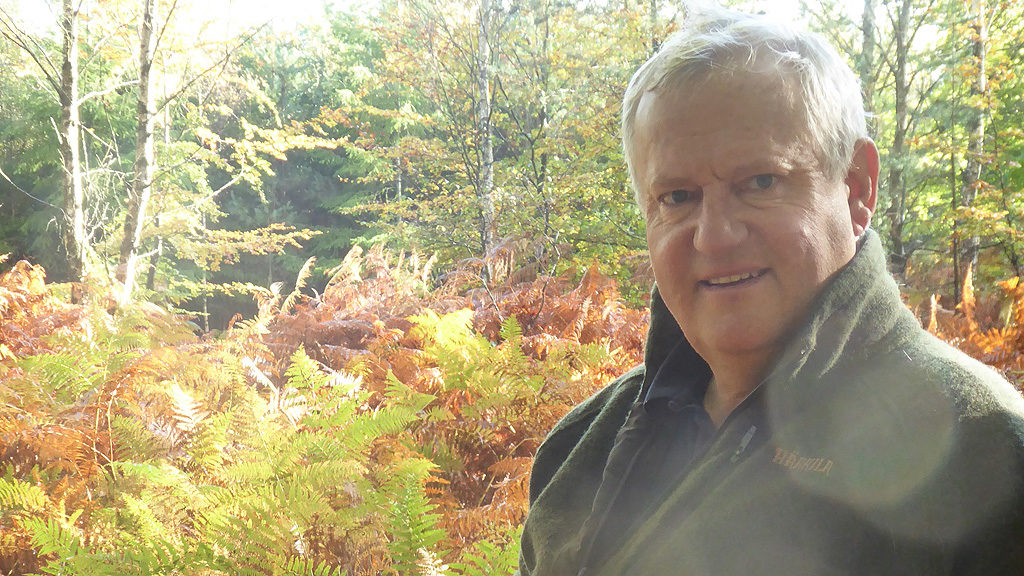
Q11 What bit of spraying do you personally find most enjoyable?
Three elements really: I love gong to a wide range of client’s properties. Some of them are in beautiful, peaceful surroundings that you would never see otherwise. Wildlife is often less spooked by seeing a machine driving slowly driving over the ground. I have a particular passion for deer and often get quite close to them. I have come across very young fawns and even an impressive red stag in full antler in a paddock near Croydon! How it came to be there neither my client nor I had any idea!
It is also good when I go back for a second visit during the season to a client to spray some more paddocks and see a clean, grass field from the results of the first application.
I enjoy passing on practical spraying experience to the trainees on my pesticide courses. I want to train them to do a job rather than just training them to pass their assessment.
Q12 Do you have a IPM strategy?
Most of my client’s paddocks are heavily grazed, horses are let out over winter and the paddocks can get a bit ‘poached’ This encourages weeds to germinate in the bare patches which then require spraying. I send out a Paddock Spraying bulletin to my clients in early spring which offers advice on paddock management such as keeping one ‘sacrificial’ paddock for winter use, paddock rotation to give each one a month’s rest each year to allow the grass to grow and strengthen, the application of fertiliser each year to give the grass a boost so an actively growing sward will help keep weeds at bay and not require spraying. Many of my customers are great with horses but not so good with paddock management so they appreciate some help and advice. We can also spray with organic liquid seaweed fertiliser if a client does not want to use a standard formula.

